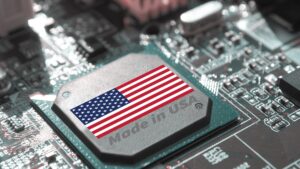The Road to Reshoring: Insights on U.S. Manufacturing and Tariffs
In a bold move aimed at revitalizing domestic manufacturing, President Donald Trump announced sweeping tariffs on imports, sparking a mixed bag of reactions from economists and business leaders. With the goal of bringing jobs back to America, Trump proposed a baseline 10% levy on all imports, escalating to even steeper tariffs for specific countries—34% on China, 20% on the European Union, and 46% on Taiwan. While this aims to "supercharge our domestic industrial base," the reality is far more complex. At Extreme Investor Network, we delve deeper into the implications of these tariffs and the challenges looming for U.S. manufacturing.
The Challenge of Bringing Jobs Back
The U.S. manufacturing landscape has undergone significant changes in the last few decades, with about 6 million jobs lost to overseas operations as companies sought cheaper labor. Although Trump’s tariffs are seen as a potential catalyst for reshoring—bringing manufacturing jobs back to the U.S.—experts like Harry Moser from the Reshoring Initiative caution that tariffs are just a piece of the puzzle. Factors like currency strength and workforce development also play a crucial role.
Moser emphasizes that while these tariffs could drive foreign direct investment (FDI) back into the U.S., he believes that lower levies would have been easier to manage and defend. The expectation from some analysts is that these initial tariff announcements could lead to negotiations that may ease trade barriers further.
Caution in Corporate Strategy
Despite the potential for reshoring, current uncertainties surrounding tariffs and their longevity create hesitation among businesses. As noted by Edward Mills of Raymond James, corporations are likely to adopt a cautious approach in light of an unpredictable policy landscape. Decisions about expanding industrial capacity not only require substantial investment but also a clear vision of the regulatory environment.
Panos Kouvelis, a professor of supply chain operations, points out the "fluid and fickle" nature of these tariff regulations, which are dictated by executive orders rather than legislative approval. This approach complicates long-term planning for businesses that need stable policies to justify significant investments.
Confidence Crisis and Its Effects
Another pressing issue amplifying the uncertainty is a notable decline in consumer confidence. Manish Kabra from Societe Generale sheds light on this crisis of confidence, emphasizing that without a resolution, potential investments may plateau. This sentiment resonates across various sectors; companies are understandably hesitant to revise their supply chains when the trade policy landscape remains unclear.
Kabra asserts, "Unless we solve the crisis of confidence, announced investments will not happen at a fast pace." This cautious sentiment creates a ripple effect, slowing down not just investments, but potentially the revitalization of the American workforce.
Infrastructure and Skill Gap
Reshoring, while a noble goal, necessitates more than just tariffs. Experts warn that the U.S. currently lacks both the necessary infrastructure and a sufficiently skilled workforce ready to meet the demands of modern manufacturing jobs. Christopher Tang from UCLA Anderson points out that rushing into reshoring could yield negative consequences if due diligence isn’t exercised.
Moser stresses the need for a robust training program to improve the manufacturing skill set in the U.S., advocating for a cultural shift from prioritizing college degrees to promoting skilled careers that offer stability and growth.
Areas of Potential Reshoring
Despite the hurdles, some sectors show promise for reshoring under the current tariff regime. The auto industry, for instance, has been identified as a likely candidate, especially with the 25% tariff imposed on imported vehicles. Electric vehicle (EV) manufacturers, who require fewer components than traditional gas-powered vehicles, are also poised to benefit from the lucrative U.S. market, provided they’ve built sufficient capacity.
Additionally, the CHIPS Act, aiming to bolster semiconductor manufacturing within U.S. borders, reflects Congressional support for specific industries likely to benefit from tariff strategies. This presents a dual opportunity: not only can companies return to the U.S., but governments can assist them in doing so.
Conclusion
While President Trump’s tariffs offer a pathway towards reshoring, the road ahead is fraught with challenges—from uncertainty in trade policies to a gap in manufacturing workforce readiness. At Extreme Investor Network, we envision a future where investment in infrastructure and workforce training makes the U.S. a manufacturing powerhouse once more. Strengthening the domestic industrial base requires a collaborative effort between businesses and policymakers to ensure that this endeavor transforms into a sustainable reality.
Stay tuned as we continue to explore market trends and provide insights into investment opportunities to facilitate your financial success in an evolving landscape.

